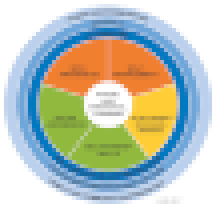A couple of weeks ago during a coaching session, a middle school teacher I work with described a fun math activity. She asked her students who were learning remotely to build blanket forts. As you might expect, the students calculated the area, perimeter and volumes of their forts. What was surprising was that for days after this lesson these students logged into class from inside their blanket sanctuaries.
Almost inadvertently, during a particularly trying time in their lives, the students built learning environments over which they had agency. More to the point, they were engaged.
A year into the pandemic, the instructional sands keep shifting from in-person, to remote, to concurrent (or hybrid) and back again. And almost every conversation I have with educators regardless of whether they are classroom teachers, instructional specialists or administrators is around student engagement. Sometimes these conversations are with administrators concerned about the increasing numbers of students on the school’s D-F list or with teachers disconsolate about students who won’t turn on their cameras, turn in work or participate in discussions and whose attendance (virtual or in-person) is sporadic at best.
All of them are asking, with some urgency, about how we can boost student engagement under these difficult and fluctuating circumstances. From my vantage point, the causes and symptoms are multi-faceted. We need to partner with students—individually and collectively—to discover the root causes and empower them to be their own antidotes.
Performance Success
Well before the pandemic, researcher Amy Berry was examining student engagement, and in the past few months TeachThought founder Terry Heick has joined this conversation. Berry and Heick both offer continua of student investment in learning from outright rebellion to the compliant student “doing school” to the fully invested student with agency over their learning and intrinsic motivation to pursue growth. That our students are distributed across this continuum is not new; that so many students now appear to have slipped into retreatism is what is so concerning.
When considering students as individuals and trying to identify the root causes of their perceived disengagement I find it useful to consider the variables of performance success—knowledge, skills, an environment conducive to learning and the motivation to learn. Missing just one of these variables can have a profound impact on engagement.

In particular, when teachers are teaching and students are learning in such varied and fluctuating settings, I am inclined to focus on the impact of the learning environment on a student’s ability to engage. That’s part of what made the blanket fort lesson such a success. Inside the fort, students could tune out distractions and focus. They could choose what to bring into their forts and what to share with everyone who could see their video feed. Middle school students are navigating the most vulnerable and self-conscious developmental phase. And by forcing these students to keep their video cameras on we are compelling them to let into their private spaces lots of people who would never be granted access to those spaces otherwise. Seen through this lens, it isn’t that surprising that they ordinarily are not active participants in their learning these days.
Whether they are socially distanced, sitting behind transparent screens in the classroom or home and tethered to a screen, the emotional wellness of our students is rightfully our paramount concern. Curriculum can be compacted. Learning gaps can be filled. But emotional injury is harder to overcome. Investment in social-emotional learning has taken on a new urgency, and through this work we can empower students to understand their own unique impediments to engagement and make that thinking visible to us.
Toward Visible Thinking
Unless we approach the development of social-emotional learning competencies through an equity framework we not only are limited in how much growth we can help our students realize, we risk compounding the damage our students have already endured. CASEL is a recognized SEL thought leader so let’s explore the competencies they have already outlined: self-awareness, self-management, social awareness, relationship skills and responsible decision-making.

When we nurture students’ self-awareness and ability to self-manage we need to include examination of implicit biases and privilege in that work. Students who are aware of the unconscious beliefs they have developed and the opportunities from which they benefit—or do not benefit—are able to develop racial and cultural literacy. Their understanding of the historical legacies and institutional systems that come to bear on their social awareness and relationships equip them to amplify marginalized voices. The result of developing this self- and social awareness means that students make responsible decisions in ways that promote equity and opportunity.
Let’s return to the blanket forts and consider how the lesson can be expanded to include opportunities for students to practice SEL skills. Students could design their ideal, personalized learning space taking into account their audio-visual, kinesthetic and other needs. They could prototype their designs and present them live to the class or as a submitted project for others to review, and then give each other feedback on their concepts. Expand this exercise by challenging students to research a community issue they could address. Perhaps they design shelters for homeless youth or temporary shelters for families in storm ravaged areas.
Beyond math—and non-fiction reading and social studies—students will examine their own needs and biases and build empathy with people whose lives and experiences are different from their own. In the process of constructing, presenting and providing feedback on their designs the students will practice understanding an audience and communicating effectively and productively. Ultimately, students are making decisions in the interest of equity, opportunity and informed action.
The more that our students become aware of their learning processes and can make their thinking visible to us, the better we can nurture their development. To that end, capturing their reflection is essential, especially when students are remote and distributed. Here is a guide students can use to collect evidence of their SEL growth (or mastery of curricular learning targets) and explain the insight they are deriving from that learning.
| LEARNING TARGET | EVIDENCE | INSIGHT |
| I can give and receive constructive feedback. | I said... I heard... |
So going forward... |
| I can recognize when aspects of my identity make it difficult for me to understand other people or situations. | I experienced... | Because of that... |
| I can use technology to connect, collaborate and learn with other people. | I created... | Now I realize... |
When students have agency over the path, pace, time and place of their learning, they will invest in it. The more we all make our thinking visible to each other, the better equipped we are to build strong, equitable learning communities that can thrive in these fluid educational circumstances.


